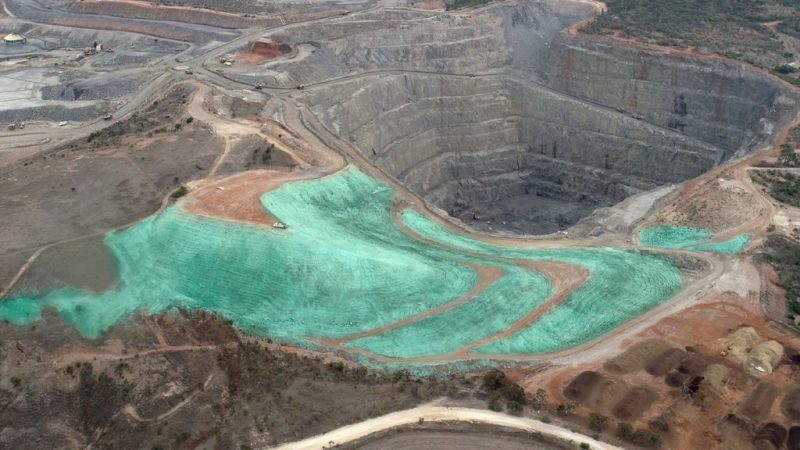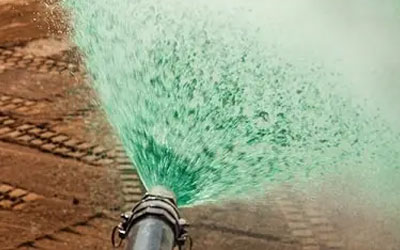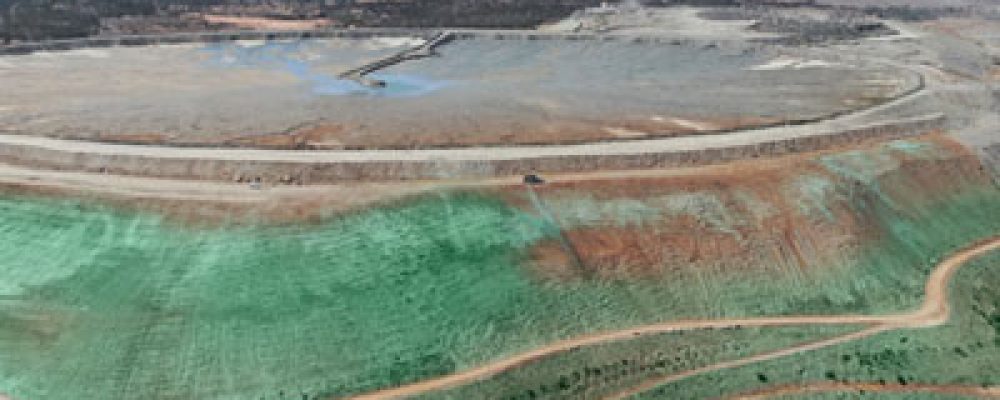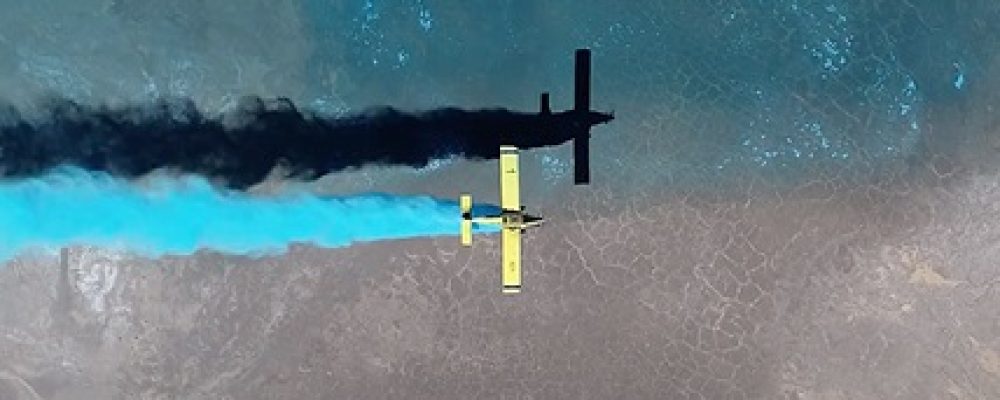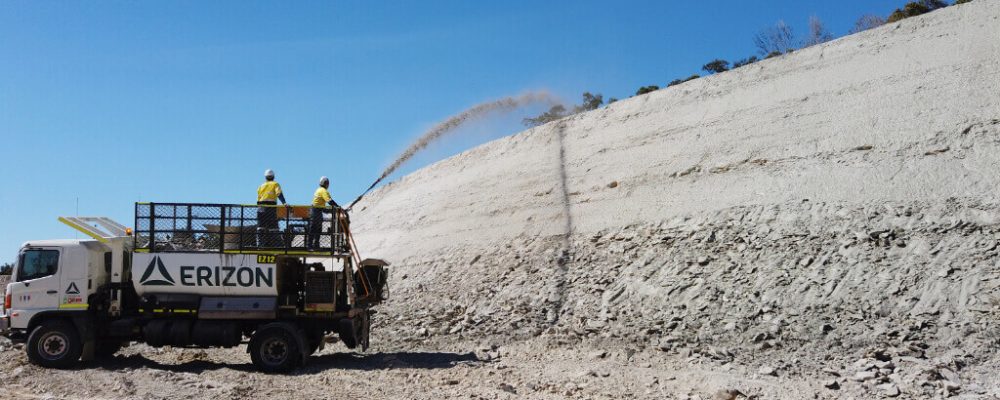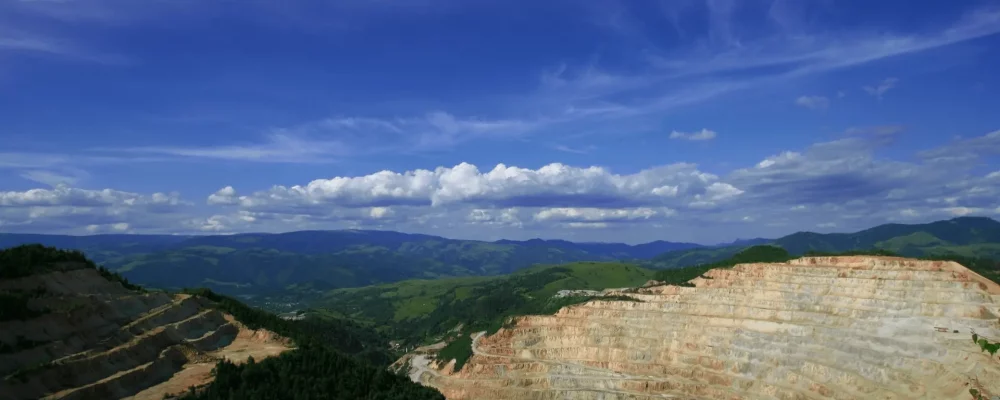All across the world, there is poverty, war, terrorism, and threats of human violence. We may not realise the dangers that can place the entire humankind on its knees in one full sweep.
This article aims to make people aware of what is going on in the deeper trenches of our planet.
We discuss environmental issues in four extensive sections. Click on one or scroll through the entire post to learn the causes, effects, and what you can do to act against their worsening.

CHAPTER 1: CLIMATE CHANGE
The world is going through a change – a massive change in its behaviour. This shift creates many disastrous implications toward Earth’s human, animal, and plant life. Find out more in the sections that follow.
Experts believe that this is most likely the greatest threat our century will ever face.
Is Climate Change and Global Warming one and the same? There is a distinction between the two, even though they may seem interchangeable.
Global warming is a significant and long-term increase in the planet’s temperature. It has become evident that the Earth is heating up at a fast and steady pace.
The Industrial Revolution in the 18th century prompted the beginning of global warming. This was a period of great change. Industries in Europe and the United States shifted its manufacturing processes. They began to produce commodities through machines, veering away from manual production.
This shift caused the significant use of energy through the burning of fossil fuels.
Climate change, refers to alterations in global climate patterns. It covers a much more extensive set of phenomena. The primary cause is also the emission of heat-trapping gases from burnt fossil fuels.
But, aside from this, climate change also refers to shifts in the behavior of the planet. A few alarming changes include the rise in sea levels and the loss of ice mass in the Earth’s coldest parts. Plants and trees have also changed blooming and fruit-bearing seasons. Extreme weather conditions like heat waves and droughts are also occurring more often.
As a result of having the same root cause, the two terms are usually interchanged. But although their causes are the same, both physical phenomena are not. The emission of greenhouse gases causes global warming. While global warming causes climate change.
Causes of Climate Change
Global climate change has been occurring in the past, only at a slower pace. Changes would occur throughout thousands, even millions of years. Today, it’s a completely different scenario. We can observe drastic changes that happen in only a year or a few years.
Many natural, as well as man-made factors, contribute to the changes in the Earth’s climate.
The Earth’s Orbit
The planet revolves around the sun in the shape of an ellipse. But this changes in many years. Sometimes, it traverses around the sun in an almost perfect circle. When this happens, its distance from the sun remains the same throughout that period.
Other times, it forms an ellipse so that its movement varies from being nearer or farther from the sun. The nearer it gets to the sun, the warmer the Earth becomes.
Volcanic Eruptions
The explosive eruptions of volcanoes endanger the lives of organisms within its radius. Not only that, but it also contributes to the state of the Earth’s stratosphere. When volcanoes erupt, they release significant amounts of Carbon Dioxide and Sulfur Dioxide. They come in the form of volcanic gas, aerosol droplets, and volcanic ash.
The ash spewed from volcanoes form dark clouds in the atmosphere. They hover over the Earth’s surface and provide temporary cooling. The smallest dust particles released can stay in the atmosphere for months to years. They can travel vast distances causing a cooling effect in farther regions.
Sulfur Dioxide forms into Sulfuric acid aerosols when released and combined with water. These aerosols form tiny droplets that reflect the sun’s rays back into space. This is why they cause much colder temperatures than the volcanic ash particles.
CO2 and water vapor that volcanoes release don’t affect the climate in a significant way. But, there have been years in the past when the planet experienced intense volcanism. This caused a considerable rise in Carbon Dioxide and water vapor in the atmosphere. This, in turn, contributed to climate change in a significant way.
Man-Made Greenhouse Gases
Carbon Dioxide is an example of greenhouse gas. As mentioned in the previous section, this can come naturally from volcanic eruptions. But a significant amount of Carbon Dioxide also comes from man-made activities.
Soil degradation occurs when flooding or human actions feed pollutants into the soil. The deterioration of land can also add to Carbon Dioxide in the atmosphere. Carbon Dioxide can exist in our atmosphere for hundreds and thousands of years. It can only diminish when the oceans beneath it absorb these gases.
Statistics
How much evidence exists that proves climate change is really happening? The IPCC reveals straightforward facts that tell it all.
- The warming trend during the middle of the 20th century is particularly significant. This is because there is more than a 95% likelihood that the leading cause is human activities.
- Global temperatures have risen by 1.62oF since the 19th century. Most of these occurred in the last 35 years, with the 5 warmest years ever recorded occurring since 2010. Records show 2016 was the hottest year ever recorded. Eight of its 12 months (January to September, but excluding June) were also the warmest on record.
- 18 of the 19 hottest years the world has experienced occurred since 2001.
- The oceans’ surfaces have absorbed most of the rise in heat. In fact, the top 700 meters of the oceans’ surface have also increased in temperature by 0.4oF since 1969.
- The glaciers and icebergs in Antarctica and Greenland have decreased in mass. In fact, data from NASA shows Greenland lost an average of 286 billion tons of ice per year between 1993 to 2016. Antarctica also lost about 127 billion tons of ice per year during those same years. The rate of ice loss in Antarctica has alarmingly decreased by thrice its usual speed in the last decade.
- Arctic sea ice shrank to its lowest level on record in 2012.
- Satellite data shows that the Earth’s polar ice sheets are losing 413 gigatons of mass per year.
- Global sea levels have risen by 8 inches since the last century. But, the rate of the rise in the previous two decades is double that figure and continues to increase every year.
- Since the onset of the Industrial Revolution, the oceans have become acidic by about 30% more. Scientists believe oceans’ surfaces absorb about 2 billion tons of CO2 per year.
- CO2 levels in the atmosphere are now at their highest since 650,000 years ago reaching up to 411 parts per million.
What This Means
What do all these statistics mean for the living organisms on Earth? Here are the implications of all these phenomena we are all experiencing.
The Rise in Global Temperatures
Temperatures fluctuate all the time. So why should you care if global temperatures rise by half a degree?
It matters a lot, actually. Thresholds in temperature will cause adverse effects on many ecosystems in various ways. An increase by a few degrees can literally mean death for some species.
In fact, sea turtles are facing the risk of extinction because of the warmer climate. Female sea turtles nest in beach sands. When the sand becomes warmer than is ideal, these turtles will bear only female baby turtles. This poses the risk of the eventual extinction of this species.
Scientists have found that an increase in temperatures of 2oC can already be fatal.
The Long-term Rise in Sea Levels
Our oceans play a significant role in tempering the effect of climate change, but at the risk of its own health.
They absorb over 90% of the heat trapped by the greenhouse gases. This has caused sea levels to rise above 8 inches while it continues to increase by 0.13 inches per year.
Experts say that based on the present level of melting, sea levels will rise from 19 to 63 inches in the next 200 years. They also claim that it is very likely Greenland will lose more than 99% of its ice sheet by the year 3000.
Today, the amount of regular snowfall is still able to compensate for the loss in ice mass. But, due to warming, the glaciers continue to thin from the inside due to the melting ebb and flow of ice. The glaciers decrease in height, so snowfall is not able to solidify into new ice.
The same experts warn further that if we continue as we do now, Greenland will melt completely. This will create a long-term impact on the sea levels, and by extension, our society. This means damage to coastal habitats due to frequent flooding. This also means diminished ecosystems of birds, fish, and plants.
The Lengthening of Frost-Free and Growing Seasons
The frost-free season occurs when the last 32oF in the spring and the first 32oF in the fall is read. This stretch of time has notably increased over the previous 30 years.
This can be an excellent indicator of the growing season. This is because the longer the period without a frost, the longer the growing season. Knowing the length of frost-free seasons can help farmers plan the growth of crops.
While lengthening frost-free seasons may seem ideal for growing, the effect is two-fold. Longer growing seasons can mean pests have more time to destroy crops. Mainly since they thrive in warmer climates.
Why Is It Important?
Adapting to climate change is crucial in today’s times. There is a pressing need to reduce the risks of its impacts on people, places, and resources. There is no doubt that it is happening and the further warming of the planet is inevitable. We want to reduce the negative effects of climate change. Thus, we have to plan by identifying its vulnerabilities and preparing for it.
Climate change serves as a catalyst to a series of adverse events to occur on our planet.
We are aware that we cannot do anything to reverse this phenomenon. The toxic gases in the air won’t disappear (not for a long time) even if we no longer emit them. The gases in the atmosphere will continue to hover over us in thousands of years to come.
But it is necessary for the survival of our species that we plan for climate change. It will not be easy, but it will be worthwhile in the end.
Timeline of the Issue
The planet’s climate has changed throughout Earth’s history. Let’s take a look at how drastically it has evolved over the centuries.
It was 7,000 years ago when the era of the Ice Age ended. The civilization of man – and the period of the modern climate began soon after. In the last 650,000 years, 7 cycles of glacial advances and retreats have occurred.
In the 1800s, studies suggested that man-made gases could impact the Earth’s behavior. Most people reacted to these studies with curiosity, not panic.
In 1837, Jean Louis Rodolphe Agassiz, a Swiss-American scientist, introduced the ‘Ice Age’. He scientifically proposed that the Earth did experience the era. This was when glaciers still covered Europe and a large part of Northern America.
In 1856, Eunice Newton Foote, an American scientist, talked about the effects of CO2. She suggested that the presence of carbonic acid gas (CO2) is significant in the warming of the planet.
In 1859, Irish physicist John Tyndall used Foote’s research. He investigated the absorption of the sun’s rays by gases in the air like water vapor, Methane, and CO2.
By the late 1800s, scientific opinion was against the belief of human activities as an influence. Scientists could not believe humans caused the warming of the planet.
In 1920, Serbian astronomer and geophysicist Milutin Milanković hypothesized the Milankovitch cycles. This describes the massive effects of changes in the movement of the planet on the climate for thousands of years.
In the 1950s, some of the first documented evidence that corroborated global warming claims appeared.
In 1956, Gilbert Plass published a study on The Carbon Dioxide Theory of Climatic Change. Here he estimated a doubling of atmospheric Carbon Dioxide.
In the 1960s, the warming effect of Carbon Dioxide emissions became more evident.
In 1968, Stanford Research Institute conducted a study. This noted that the rising temperature will eventually lead to a series of events. This includes the melting of the ice caps in Antarctica and a rise in sea levels. He also mentioned the warming of the oceans and that these events were almost certain to occur by the year 2000.
In 1969, the North Atlantic Treaty Organization (NATO) was the first to deal with the issue at a global level. It established a research hub that dealt with acid rain and the greenhouse effect.
In the 1970s, scientific opinion began to favor the warming viewpoint.
In 1988, the Intergovernmental Panel on Climate Change (IPCC) was created. This group aims to provide an objective and scientific view of the issue of climate change.
By the 1990s, a consensus position was formed due to the validation of the Milankovitch theory. The consensus was greenhouse gases contributed to the changes occurring in the Earth’s climate. Also, that emissions from human activities are causing noticeable global warming.
Since the 1990s, research towards learning about climate changes have progressed further. Research has expanded our understanding of the relations of various causes. Historical data have linked many fields like atmospheric sciences and numerical modeling.
Experts are now able to model climate change numerically. This is contributing greatly to plans of reducing and managing risks to climate change.
What Can a Business Do?
First, a little background.
In 2015, 196 countries signed into an agreement to commit to a single, comprehensive plan. This plan aims to keep global temperatures from rising beyond 2oC, or more ideally 1.5oC. The rise above this threshold will mean catastrophic effects and permanent climatic disturbances. The agreement aims to strengthen the international response against climate change.
The agreement doesn’t dictate how each country can achieve this. But, it does provide a roadmap of how to cut emissions and how to increase those cuts over time. Each country specifies how much emissions it pledges to cut. Then develops a plan of action on how it intends to achieve it.
The IPCC mentioned in a recent report that it is still possible to lessen warming by as low as 1.5oC. But, maintaining it at this level will need unprecedented measures.
This includes lowering the total emissions of toxic gas into the air by 45% from 2010 levels. In 2010, CO2 composed 65% of the Earth’s atmosphere. We also need to aim for zero emissions by the year 2050.
These efforts from governments shouldn’t be a movement composed of them alone. It should be a global effort geared toward global well-being. Businesses can do massive steps to contribute to climate action.
Measure Your Carbon Footprint
You need to start somewhere. The most ideal place to start is to know how much greenhouse gases your business is emitting per year. Conducting a carbon accounting audit will allow you to create an appropriate plan. Use a third party’s help in creating this plan to decrease footprint from existing levels.
Develop a Climate Action Plan
Once your annual data is set, it’s time to develop an action plan. Dissect your processes and business activities in a systematic way. Identify which of your business activities emit greenhouse gas. Make appropriate and sustainable changes to them. The most common areas you should look into are the ones below.
- Supply Chain
- Energy
- Transportation
- Food Supply
Set Targets and Goals
Once you know how to put your plan in place, set time-sensitive goals. Quantify targets set in the fulfillment of those plans.
An excellent idea is to set an ‘internal carbon price’. This price will represent your company’s emissions. This will allow you to assess useful metrics. Metrics like opportunity costs of invested capital, ROI, and payback periods. You can achieve this by plotting the project costs involved in your plan before you implement it.
Track and Regulate Your Progress
A third party consultant should do this for you. This will ensure accountability and measuring your actual progress. Monitoring your progress will confirm the efforts you’ve accomplished. It will also help you spot areas that may need improvement.
Support ‘Climate Active’ Politics
Most businesses shy away from involving their company in politics. But whatever our opinions of politics, the influence of governments are undeniably far-reaching. Actively support political organizations or movements in legislation. Select those that aim to create a better environment.
This will create a positive impact on your environmental advocacy. Support for policies like the Clean Air Act will eventually drive down the cost of energy use. In turn, the cost of your company’s energy consumption will decrease as well.
Why Should a Business Care?
There exists an urgent need to act against climate change today. It can damage worldwide economies, ravage populations and decrease the availability of resources. It can also impact the cost of doing business dramatically.
So it is both humanitarian and astute business practice to take steps against the issue.
Also, governments are driving aggressive policies. They want to apply these policies on an international level. From a business standpoint, changing internal policies is proactive. It will serve as excellent business decisions in the long run.
Aside from that, companies can also save money and secure energy sources. The reduction of solar energy costs and other renewable resources will enable this.
Also, surveys reveal consumers today have changed in their qualifications for purchasing. They look at a brand and see if the company that owns it aims for environmental conservation. They want to support a business that has a vision of a better world.
Fighting against climate change can serve as a marketing tool. This can create excellent storytelling opportunities you can use in your marketing initiatives. You can assure your consuming public that your brand is meaningful. Empathize by standing by the same values they do towards caring for the environment.

CHAPTER 2: BIODIVERSITY LOSS
We all are inhabitants of the Earth held together by an intricate web of connectivity. What each species contributes to its ecosystem impacts other species outside of it. So the loss of even the smallest part of biodiversity creates huge effects that we shouldn’t disregard.
Loss of biodiversity doesn’t gain media coverage as extensively as it should. Organizations and large industries are now raising awareness globally. Even so, individuals are still unfamiliar with what it is and the depth of its effects.
Read more as we discuss the causes and effects. Including the dangers it poses, making this a primary environmental concern.
An Overview of Biodiversity
Biodiversity is the foundation of our ecosystem. It is the variability of living organisms from different ecosystems. This includes marine and other aquatic ecosystems. Managed and unmanaged ecosystems are all included in biodiversity.
This means that plantations, farms, and croplands are also part of biodiversity.
Even rangelands, urban parks, nature preserves, and wildlands belong to it.
Our well-being as humans has an intimate link to biodiversity more than we realize. With this in mind, the loss of biodiversity is something we should be aware of.
What is Biodiversity Loss?
It is the extinction of species, which includes plants or animals worldwide. This covers the loss or reduction of species in a particular habitat. Minor changes in the species composition can have a dramatic influence on the food chain. It can affect co-extinction, which can lead to the reduction of biodiversity.
Biodiversity covers all species worldwide, and the loss of it can pose a danger to food security. The food chain is a complex web rather than a ladder. Species interact with each other in direct or indirect ways to survive. Any minor change can have a dramatic effect on a large number of species. We will delve into this further as we discuss biodiversity loss.
The Decline of Global Species
Our world faces mass extinction of species due to human activities. Human civilization has made a negative impact on most living things, whether we want to admit it or not.
- We have been losing species 1,000 to 10,000 times more than we used to. This is the most significant number of species extinction in the last 60 million years.
- Between 1970 and 2012, marine biodiversity has declined to 36%.
- The world has harvested more than 30% beyond fisheries’ biological capacity.
- Biodiversity suffered a decline of 81% in the freshwater system between 1970 and 2012.
- More than 650,000 of marine mammals worldwide get injured or caught by fishing gear per year.
- 1 in 8 birds is at the risk of extinction globally, which means a 40% decline in our world’s bird species.
- Climate change has made the lizard population vulnerable. 40% of all lizard species are projected to go extinct by 2080, a recent study reports.
- A new study showed a decrease of 75% in insect population over the last 28 years in Germany.
- 60% of the world’s 504 primate species are under extraordinary threat of extinction. 75% of those primate species have a severe decline in population.
- The world’s big cats are in dangerous decline. Many of them will become extinct in the next 10 years. This includes tigers, cheetahs, and leopards worldwide. They are being hunted and exploited for their skins and body parts.
What Causes Biodiversity Loss?
Different factors contribute to the loss of biodiversity. We will discuss the significant threats that contribute to habitat loss.
- Habitat Loss and Degradation
- Simply put, habitats are the places where organisms live. Habitat loss and degradation happens when either natural or human activities cause changes. This changes the habitat so that fewer species are able to live there.
- An example of human activity is when people cut down a section of a forest to make space for farmlands. This eliminates the habitat of hundreds of species and can drive them to extinction.
- We often think of landslides and earthquakes when it comes to ruinous natural events. Although they alter the landscape, the ecosystem can still recover from such events. But, human-caused habitat loss often creates irreversible destruction. It changes the ecosystem on a global scale that poses a significant threat.
- The primary culprit of forest deterioration is illegal logging. We lose 18.7 million acres of forests per year around the world due to illegal logging activities. That’s equal to 27 soccer fields of forest every minute.
- This is not to say that only other species get affected by habitat loss. We, as humans, depend on the entire ecology functioning to survive. Natural habitats provide our food, create the air we breathe, and purify the water we drink. They supply all the materials we need to survive and as such, are part of the great cycle of life. This is why the loss of habitat and deterioration is a massive threat that will endanger plants and animals.
- Deforestation
The Amazon has lost around 17% of its forest in the last 50 years. Remote areas with valuable mahogany felt the encroachment as well. This was during the discovery of oil and gold. Deforestation has become rampant due to forest conversion for cattle ranching. This is a major concern since these forests are home to a large part of the world’s biodiversity.
- Heat and Drought Stress
- Air Pollution
- Overexploitation
- War and Armed Conflict
- Invasive Alien Species
Loss of Biodiversity Timeline
- January 1, 1960
WWF raised over $5.6 million to support 356 conservation-related projects worldwide. - April 13, 1962
The Charles Darwin Research Station was established. The station played a crucial role in raising awareness of unique species preservation. - January 1, 1969
The National Environmental Policy Act or NEPA was one of the first laws that established the protection of our environment. - April 22, 1970
The first Earth Day - January 1, 1973
The Endangered Species Act was passed. - January 1, 1975
The first conservation campaign based on an entire biome instead of an individual habitat was launched. - January 1, 1980
The world conservation strategy was published - September 29, 1992
The Energy Policy Act was passed in the United States to increase clean energy use. - March 11, 1998
The creation of the Living Planet Report. A science-based analysis of biodiversity health and our ecological footprint. - January 1, 2002
An effort made to save the Amazon. Brazil, along with other partners, and WWF launched a 10-year initiative to preserve 12% of the Brazilian Amazon. - January 1, 2010
The largest environmental activism was created to show support on climate change. This is widely known as the Earth Hour. - February 18, 2012
Hudson River estuary restoration was launched.
What this means
We have discussed the major threats to biodiversity. Let’s discuss what happens next.
- On Human Health
- Human development has been possible through nature. But, our relentless demand for resources is accelerating the extinction of our world’s ecosystem.
- Dwindling Fish Stocks
Our primary source of protein comes from fish. Industrialized fishing has been an alarming concern for years, causing mass extinctions of marine life. - If this continues, the ocean will no longer be able to produce any fish at all. The reproduction will come to a halt, and our source of protein will cease to exist.
- Threat of Extinction
The danger of extinction not only applies to the different organisms on our planet. With a count of 7.5 billion people on Earth, we are adding 227,000 more each day. Our wildlife is taking a massive toll on our ever-growing population, and it’s impossible to miss. Currently, most biologists agree that we are in the midst of the sixth mass extinction event. This is not because of war and chemical warfare but due to overpopulation. Our population growth is causing overconsumption of resources. This needs addressing before it becomes too late. Otherwise, our natural resources will no longer have the ability to produce. The hunt for food will become our most pressing problem.
- On The Environment
Why It’s Important
Awareness of biodiversity loss is paramount. Its loss will create catastrophic effects on humans and nature. It’s as immense a threat to us as climate change.
In the past 50 years, the deterioration of nature has been driven by the different causes we have mentioned earlier.
Biodiversity encompasses more than just the animals we can see. It includes bacteria and tiny genes as well as entire ecosystems like the Amazon rainforest. This creates a figure of 1.5 million identified species in the world. But, the true figure is estimated to be 10 million or 2 billion species. This is because we haven’t explored 95% of the ocean where other species are still unknown. This makes it harder for our scientists and biologists to provide an actual data.
You may ask, why is it so important? Organisms interact with each other. The decline of a single species can and will trigger a loss on the broader ecosystem. You may have seen news about the threat of extinction to our bees. Without pollinating bees, basic processes such as breathing will become harder.
A recent report found that a quarter of our plant and animal species face extinction within decades unless we take action.
The Relationship Of Business to Biodiversity Loss
Companies and brand are linked with biodiversity more than we care to think.
Why Should Businesses Care
Companies and businesses rely heavily on renewable resources. Biodiversity loss should be considered as a huge business risk.
Loss of biodiversity is a clear indicator of how our ecosystems are being degraded at a rapid rate.
With the help of technology, companies can eliminate hidden risks. The eradication of illegal activities can also help biodiversity.
What can a business do about it
Being aware of biodiversity loss is the first step. There are various steps companies can take to help curb the loss of biodiversity.
- Reduce Carbon Footprint
- Reduced carbon footprint helps a lot with the environment as it will lessen the damages.
- Policy concerning Deforestation
- Raise Awareness
- Go Package Free
- Protect Local Habitats
Focusing on Implementation
Now that we are aware of what biodiversity loss is, we can focus on implementation.
You can start small by using zero waste products and joining small organizations. It’s not too late, and we can still save our planet and all living organisms on our planet. A small but steady step takes a long way.

CHAPTER 3: AIR POLLUTION
Air is as vital as life. Like life, the air we breathe is a fragile component of the world’s survival. Without it, you and I will cease to exist. Below we tell a story of humankind’s fight against the pollution of the planet’s atmosphere.
Simply put, air pollution is the high concentration of pollutants in the atmosphere.
The air becomes polluted when the atmosphere collects excess amounts of harmful gases. Such massive quantities that they exceed Earth’s natural capacity to disperse them. Neither is it able to dilute or absorb the chemicals due to its high concentrations.
Examples of the most common pollutants today are:
- Particulate matter
- Ozone
- Nitrogen Dioxide
- Carbon Monoxide, and
- Sulfur Dioxide.
But there is nothing simple about the effects of the presence of these chemical compounds in our air.
These particles can pose severe threats to human, animal, and plant life. Not only that, but they also bring a slew of other issues affecting our ecosystem in a catastrophic way.
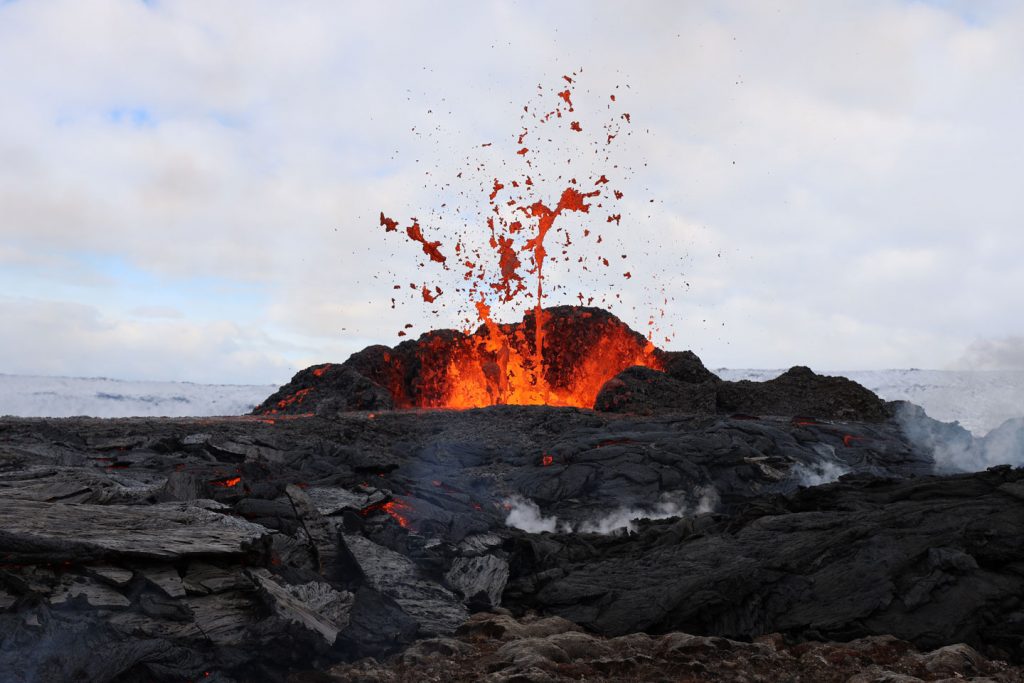
Causes
To know the causes of air pollution, first, we need to find out where they come from. Air pollutants are usually categorized into two types: primary and secondary pollutants.
Primary pollutants refer to compounds that sources emit straight into the atmosphere. These may be due to either man-made actions or natural events. While secondary pollutants form when a primary pollutant interacts with other chemicals.
Natural phenomena include:
- volcanic eruptions
- forest fires
- lightning strikes
- wind erosion
- pollen dispersal
- organic compound evaporation
- natural radioactivity
They release large concentrations of chemicals into the air. It’s a good thing these forces of nature, although uncontrollable, do not happen very often.
But air pollution caused by human activities is much more prevalent, especially today.
We discuss in detail the most widespread human activities that cause air pollution.
Combustion of Fossil Fuels
When we burn fossil fuels like coal, natural gas, and oil to produce energy, we release harmful gases into the air.
It is their natural behavior to trap heat. So when these gases accumulate in Earth’s atmosphere, they absorb the sun’s rays. This causes temperatures on Earth’s surface to rise.
This creates the formation of a vicious cycle. Air pollution contributes to the worsening of another environmental issue, Climate Change. While climate change increases global temperatures. In turn, higher temperatures intensify some types of air pollutants. Like smog, for example, which only forms when the weather is warm.
Industries that are common in urban cities emit vast amounts of these harmful gases. They emit gaseous waste into the air daily as the end result of their production process.
The use of vehicles like cars, trains, and airplanes releases Carbon Monoxide. Since we rely on them daily, it is inevitable that a considerable volume gets emitted daily.
Agricultural Activities
Agriculture may connote the idea of green living, but it will surprise you to find out otherwise. The cultivation of vegetables and fruits produces a harmful by-product. Farmers often use fertilizers on their crops. This means that they dose acres of farmlands with chemicals. These chemicals, in turn, get emitted into the air.
Animal farms also contribute to air pollution in the form of animal waste like urine and manure. In fact, animal waste produces a staggering number (estimated at 400) of gases.
Since farms keep masses of animals in one location, the gases they emit daily can rise to alarming levels. This poses a danger to the local community and environment.
Household Supplies
Particulate matters are another cause of air pollution. These are microscopic-sized solid or liquid particles that get suspended in the air. Various processes like industrial, commercial, and residential combustion produce these materials.
Household cleaning supplies like cleansers and disinfectants contribute to indoor air pollution. The same goes for home improvement materials like waxes, paints, varnishes, and solvents.
Statistics
What is the state of the Earth’s atmosphere today? The World Health Organization conducted a 2-day consultation with experts on February 12-14. Here are the hard facts they found.
- 91% of the world’s entire population lives in places with air quality that is below the WHO guideline limits.
- Over 80% of people living in urban areas breathe in contaminants in the air that exceed limits set by the WHO.
- 7 million deaths that occur worldwide every year are due to air pollution. To be specific, 4.2 million deaths that occur every year are due to exposure to outdoor air pollution. Also, 3.8 million deaths that occur per year are due to exposure from smoke from dirty cookstoves and fuels.
- 9 out of 10 people breathe in air that contains high levels of pollutants.
- 24% of deaths from stroke are due to air pollution, estimated at 1.4 million every year.
- 25% of deaths due to heart disease are because of air pollution, estimated at 2.4 million deaths per year.
- 43% of deaths due to lung disease and lung cancer are because of air pollution, estimated at 1.8 million per year.
The World Economic Forum talks about the state of the world’s cities in an article released recently. This article was first published on Reuters during the middle of 2018. The report gives revealing data.
They gathered data from 4,300 cities in the world, taken from the WHO’s database. The aim was to find out which cities are most polluted based on the amount of particulate matter present. The results all point to India being the most polluted country. This is because 5 out of 10 of the most polluted cities in the world are cities in India. Here’s the list.
- Gwalior in India
- Allahabad in India
- Al Jubail in Saudi Arabia
- Pasakha in Bhutan
- Raipur in India
- Novi Sad in Serbia
- Delhi in India
- Ludhiana in India
- Cairo in Egypt
- Khanna in India
What This Means
Because we live on one planet and one ecosystem, we share all the resources on Earth with every living thing in it. That includes pollution, contaminants, and waste. No matter how far apart we are from each other, what happens in one part of the world will always affect the rest of it.
Air pollution has become so widespread that it has brought about many other issues. These environmental concerns also pose catastrophic effects on our ecosystem.
Immune, Respiratory, and Heart Problems
The Carbon Monoxide from the fossil fuels we burn has direct and negative impacts on our health.
- Always breathing polluted air puts people at risk of many respiratory diseases. Coughing is frequent in urban areas which have higher levels of pollutants.
- Exposure to high levels of particulate matter causes higher incidents of health problems. This includes heart and lung problems and even lung cancer.
- Air pollution causes damage to the immune and reproductive systems of the body.
- Children are also put at risk of getting asthma and pneumonia due to exposure to pollutants.
Depletion of The Ozone Layer
The Ozone layer is the protective blanket hovering over Earth’s stratosphere. It prevents the sun’s harmful rays from reaching the surface. The significant presence of air pollutants in the atmosphere contributes to its thinning. The effects of UV rays on humans are disastrous as these can cause eye and skin problems. Strong evidence shows that exposure can cause the following:
- Skin cancer
- Respiratory inflammation due to decreased lung function
- Damage to the immune system
- Eye damage like ‘snow blindness’, cataracts, pterygium, and pinguecula
- Premature skin aging
Global Warming
There is a worldwide call today for the need to take immediate action against air pollution. The collection of harmful gases in the atmosphere is causing the Earth to become warmer each day.
Global warming, or Climate Change, is sending out signals warning against impending disasters.
- Rise in global temperatures – The rise of the Earth’s surface has reached up to 1.62o F since the end of the 19th century.
- Heating up of oceans – The oceans’ top 700 meters of the surface have increased temperatures of up to 0.4o F.
- Melting of the glaciers and icebergs – Antartica’s ice mass has lost triple its average size in the last 10 years.
- Rising of sea levels – Global sea levels increased to 8 inches in the last 100 years and is accelerating yearly.
Acid Rain
There are invisible air pollutants like Nitrogen Oxide and Sulfuric Oxide. When they combine with the rain that falls to the Earth, they form Acid Rain. Some of the devastating effects of acid rain include:
- The inability of fish eggs to hatch, and most young fish to survive acidic bodies of water
- The death of trees and plants as acid rain removes minerals and nutrients from the soil
- The increased risk of heart attacks resulting in human death
Eutrophication
Eutrophication is a condition when excessive Nitrogen in the air fall to bodies of water. When these massive amounts accumulate in lakes or seas, they induce the growth of too many algae. This will result in the depletion of oxygen in the bodies of water, causing the death of animal species in it.
The effects of air pollution pose threats to the Earth and its entire population.
Why It Is Important
To further stress how pressing a concern air pollution is, let’s delve into these topics. First, let us find out why it is crucial to study the issue. Second, let us address the question of why it is necessary to breathe in clean air. Third, let us discuss why it is vital to take actions to prevent or lessen air pollution.
Awareness of The Problem
Air pollution is like the big elephant inside the room that everyone ignores. Well, not everyone. Most people think that the problem of air pollution is not their responsibility. While others believe that lessening or preventing it is an impossibility.
Knowing the ‘enemy’ will help us to analyze its behavior and enable us to learn how to control it. So monitoring air pollution is vital so we can identify peaks or falls that allow us to control it.
It’s crucial that we learn about this issue, no matter how unpleasant it may be.
Importance of Clean Air
Let’s start at the cellular level.
When we breathe in clean air, we take that inside our lungs and our cells. Our bodies need fresh, clean air for our cells to reproduce in a properly. Oxygen also gives energy to our cells, allowing it to function in a more efficient manner. Oxygen supply, along with other nutrients in the body, enables our cells to expel toxins.
Let’s magnify this scenario by a billion-fold to represent the population on Earth. This will give way to a chain of positive events that will benefit the entire society as a whole.
Increase in public health (for human, plant, and animal population)
Improvement in the performance body and goal-oriented functions
A general decrease in all the ill effects listed above (like climate change, acid rain, etc.)
Value of Taking Action
The reduction and prevention of air pollution shouldn’t fall only at the hands of a select few.
Like its effects starting at the cellular level, the solution should also begin at the core. Every individual, every government, and business should strive to take steps against it. No matter how small it is, ensuring to make strides in preventing it should come as natural as breathing.
Timeline of the Issue
While this concern may seem like a modern-day issue, history will beg to differ. We discuss the significant events that took place in the past to help us better understand why it is what is today. But delving into the earliest recordings of air pollution will bring us into a hazy past. So let’s start in the 19th century during the onset of the Industrial Revolution.
During this time, it was Great Britain that experienced the most pollution in the world. This was due to its constant use and burning of sea coal, which they found in large outcroppings near the NE coasts. The country made a few strides, although ineffectual, in attempts to control the issue.
1819 – Great Britain declared that furnaces and engines could reduce smoke and gases.
1843 – Great Britain recommended a bill to deal with nuisances from furnaces and engines. None were ever enacted, though.
1845 – Great Britain stated no law could regulate the fireplaces of ordinary homes in London. They decided this after taking into consideration their current knowledge.
1873 – London experienced its first thick and persistent fog laden with soot and sulfur. This resulted in 650 deaths.
1880 – London experienced a three-day smog in January, which resulted in 1176 deaths.
1881 – Chicago passed the First American Smoke Ordinance. This declared that the emissions from the smokestacks of any boat or chimney were a nuisance.
1905 – An oxygen-starved Londoner termed the term ‘smog.’
1930 – Belgium experienced a large-scale smog which resulted in 80 deaths and 6,000 people taking ill.
1943 – The first episode of Los Angeles smog occurred. It was at first believed as a Japanese chemical warfare attack. Days later, they realized it was actually a direct result of the influx of cars and industry in the city. To be more specific, it came from the fumes from the tailpipes of their very own vehicles. The thick fog affected three city blocks with stinging eyes and running noses. There were no reported deaths.
1948 – A lethal haze blanketed over Donora, Pennsylvania. Several days later, 7,000 people experienced cardiovascular or respiratory problems. This number accounts for almost half of its entire population at the time. People found it difficult to breathe. This resulted in the death of 20 people from asphyxiation.
1952 – The Great Smog of 1952 affected the British capital of London. A combination of cold weather, windless conditions, and airborne pollutants prompted this event. It lasted for four December days. This resulted in 4,000 deaths and 100,000 people who fell to respiratory tract illnesses.
1956 – The British parliament passed the Clean Air Act as a response to the Great Smog of 1952. This introduced measures to reduce air pollution.
1963 – The U.S. government passed the Clean Air Act in an attempt to control air pollution at a national level.
Today, technology has allowed experts to make leaps and bounds in the study of our planet’s health.
The National Aeronautics and Space Administration has a team called the Ozone Monitoring Team. They sit aboard the Aura satellite and specialize in finding ‘fingerprints’ or gases. These gases clutter the atmosphere and are visible images on Earth’s ozone layer.
What Businesses Can Do
Businesses all around the world contribute to a whole lot of the air’s contamination. The silver lining is they can reverse the situation and help save the environment.
The key is to rethink the process.
What procedures within your daily conduct of the business can you change? Can doing this alteration for the long-term be workable? Will you be able to commit to eco-friendly contribution to the community?
Use of Renewable Fuel
This will address the most significant cause, the burning of fossil fuels. The most significant step your business can take is to move away from the use of fossil fuels to produce energy. You can instead invest in renewable sources of energy. This can include solar, water, wind, and geothermal sources. This will allow you to produce the power you need without harming the environment.
Conservation of Energy
As vital as producing clean energy, businesses should strive to make use of power in an efficient way. Conserving energy consumption will decrease the use of it. In turn, the need to keep producing it reduces also.
Self-Check and Compliance with Legislation
Companies should perform regular self-checks to measure the level of gaseous waste emissions. You can invest in monitoring instruments that measure air quality to aid in this step.
Ensure, also, that you are following the regulations set by the city or state in which it operates. The laws are there for a reason. So, complying with the legislation will bring invaluable benefits to all parties involved.
Environmentally-Friendly Transportation
You can have your employees make use of shared mobility like car-pools and service buses. Shifting to electric or hydrogen vehicles also help reduce air pollution.
Green Building
You can lessen your carbon footprint from the get-go by creating ‘green buildings.’ These structures aim to create a workplace that uses resources in a responsibly.
Monitor and Regulate Own Emissions
That is to say, pollutants coming from the daily grind of the personnel. Ensure your workers are well aware of the health risks involved in their work. This applies particularly to workers who work daily with gases or dust and smoke.
- Don’t Overlook Housekeeping
- It’s crucial to set procedures in the proper handling of hazardous substances. Ensure thorough and regular cleaning of all machinery and equipment. Make sure also that the workplace environment is well-ventilated.
- Substitute Materials
- Reuse Materials
Why Should a Business Care?
Why should it matter to a business if polluted air envelops the world they evolve in?
Well, in a nutshell, air pollution is bad for business.
Adverse Effect to Labor Force
The World Health Organization has gone as far as calling air pollution as the ‘new tobacco.’ This is how destructive it is to our health. Traffic congestion and pollution not only disrupt normal business operations. Studies show that poor outdoor air quality affects job performance negatively. This is true even for employees who work all day indoors.
It also contributes to employees taking in more sick days. The air pollution in Central London, for instance, causes over 656,000 sick days per year. This, in turn, will result in billions of dollars of lost labor income. Thus, plummeting profits for your company.
Cities with polluted air also become less attractive career and migration options. This does not bode well for any business. Particularly those that need massive manpower to operate.
Negative Brand Reputation
Most businesses today contribute to the increase in air pollution. Daily business conduct involves the manufacturing of products or distribution of commodities. These need fuel to produce energy. But, most companies will dismiss this. They remain of the opinion that it is somebody else’s responsibility.
Some governments have taken it upon themselves to act against air pollution. New Zealand, for example, has set national standards as a basis in the monitoring of smoke and dust. They track air pollution and report them to the public if the results exceed the standards set. They came up with two methods that will pinpoint the specific source of the hazard.
It is not such a far-fetched assumption that the rest of the world will someday be able to emulate these methods. Especially with the speed at which technology is advancing.
If this were to happen, governments could hold businesses responsible for emitting pollutants. There will be full transparency, so the business’ consuming public will scrutinize them.
This scenario can only lead to a business’ eventual downfall.
Irresistible Business Offer
If your company aims to support the community’s well-being, you can set priorities. You’ll be able to build momentum and create a more significant impact on society. Investing in solutions that address air pollution will help the environment, too. This is a two-for-one deal, a business offer your company would be remiss to resist.

CHAPTER 4: EVERYTHING YOU NEED TO KNOW ABOUT WATER POLLUTION
Water composes a massive part of our planet. So the contamination of our seas impacts us in many significant ways. We discuss the steps we need to take to save this critical resource and influence future generations in a positive way.
Water covers 70% of the Earth’s surface. It’s a critical resource for the survival of all humans and the environment.
Water pollution goes hand-in-hand with air pollution when it comes to environmental concerns. It affects not just large but also small bodies of water around the world. Polluted water also affects entire ecosystems that exist in the water.
As of today, organizations are working hard to protect our waters from contamination. They have committed to restoring waterways and keeping bodies of water from contamination. Many organizations are helping to educate and encourage practices to preserve water ecosystems.
What is Water Pollution
Water pollution is the contamination of water, which causes a decrease in its quality. Pollution occurs when harmful substances contaminate water. The pollutants make it toxic to humans and the environment.
Common Types Of Water Pollution
Numerous types of pollution occur in water. They pose threats to marine life that can result in extinction. We are going to discuss the most common types of water pollution below.
Groundwater
One of the most natural primary resources we rely on for drinking.
Groundwater comes from rainfall that has seeped deep into the Earth. Pollution comes from contaminants such as the pesticides and fertilizers in the soil. These harmful substances reach groundwater making it unfit for drinking. Some cases of polluted groundwater take decades to repair.
Surface Water
Surface water refers to water on the surface of continents such as lakes and rivers. Pollution takes place when some bodies of water are no longer fit for drinking. Water pollution on our surface water has a catastrophic effect on our drinking water. Furthermore, surface water pollution can also make it unfit for swimming and fishing.
The leading type of contamination comes from Nutrient Pollution. These include phosphates, nitrates, and fertilizer runoff.
Extreme cases of pollution can occur when rivers are no longer fit for drinking. This affects our supply of fresh water and makes it challenging to find resources.
Ocean Water
Ocean water pollution occurs when streams or rivers bring harmful matters into seas. They carry all the bacteria out into the ocean, which affects the ecosystem.
These contaminants come from different sources such as farms, factories, and major cities. Pollutants of the ocean are usually composed of plastic materials. They reached bodies of water in many ways, either it’s washed in via drains and sewers or blown in by the wind.
Point Source
Point source pollution comes from a single source of contamination. One example is oil spilled straight into bodies of water. Immediately knowing the cause enables authorities to make prompt countermeasures. Organizations are now establishing limits on industries. They have set standards on the types of substances industries can discharge to the water.
Non-point Source
Non-point source pollution is the exact opposite of point source. The contamination comes from a combination of different sources. Having no identifiable culprit makes it difficult to regulate these types of pollutants.
Trans-boundary
Trans-boundary pollution happens when contaminated water from one country spills into another. This means water pollution doesn’t stay in one boundary. The most common example of trans-boundary pollution is an oil spill.
Common Causes and Countermeasures
With our resources depleting every year, organizations are creating prevention countermeasures. Pinpointing the common causes is only the first step.
Causes of Water Pollution
Water comes from many sources that connect many different bodies of water. This makes it challenging to pinpoint the exact cause of water pollution. But, by categorizing them into the most common causes, we can split them into four common types.
- Agriculture
- Agriculture is the leading cause of the degradation of water. Farming and livestock production use more surface water compared to humans. Whenever it rains, fertilizers and animal waste wash out into our waterways. This makes agriculture the most significant contributor to water pollution.
- Sewage and Wastewater
- Oil Pollution
- Radioactive Substances
Water Facts Everyone Should Know
As we discuss the different factors on water pollution, here are a few facts about water.
- 70% of global surface water is used by agriculture.
- Water is also known as “the universal solvent” because it can dissolve more substances than any other liquid.
- 80% of water pollution comes from the land.
- 68% of fresh water is locked up in ice caps and glaciers. This makes 30% of freshwater coming from groundwater.
- 80% of the world’s wastewater goes back to the ocean untreated.
- 30% of freshwater comes from groundwater. This makes 1% of freshwater accessible to us.
- 50% of waterborne illness is associated with extreme rain.
What this Means
- To Humans
- Unsafe water can make us sick and, every year, this affects up to 1 billion people. Diseases spread by polluted water include typhoid, cholera, and giardia.
- Even swimming in polluted water can involve serious risks. You can catch different diseases such as pink eye, skin rashes, and even hepatitis.
- At the moment, we only have 1% of freshwater as a source for drinking water. Experts predict that by 2050, we will have lesser than 1%.
- To The Environment
Why It’s Important
Water pollution is getting rampant every year. This will take us decades, even thousands of years to do damage repair. If immediate action is not taken, there will be less and less drinking water available for us in the future.Water Pollution Timeline
The past, present, and predicted future.
- 312 B.C.
The Roman aqueduct was created after the pollution of the Tiber River. - 1854
Cholera outbreak in Soho, London due to germ-contaminated water. The outbreak killed 616 people. - 1868
The first fire at Cuyahoga River due to an oil spill. It inspired a movement after the 13th it caught fire. - 1962
Rachel Carson published her book ‘Silent Spring’ documenting the effects of pesticides on water. - 1979
Second largest oil spill at 130 million gallons in the Campeche Bay, Gulf of Mexico. - 1991
The largest oil spill in history. About 480 – 720 million gallons of oil spilled in Kuwait. The full repair will take decades. - Predicted Future
– By 2050, we’ll experience water quality deterioration.
– 1 in 5 people will be at a high risk of water pollution.
What Can Businesses Do To Help
- Review your daily operations
- Check your regular processes and review if it is possible to cut back on solvents. See if there are machines you can use in a more efficient and responsible way.
- Try alternative Materials
- Find Ways to Reuse Materials
- Minimize Impact on the environment
- Improve Work Practices
Why Should Companies Care
As a business, the waste your company produces should be one of your primary concerns. Where it goes and how it’s taken care of are matters you shouldn’t overlook.
- Ridding Contaminants Can be Difficult
- There is no doubt dealing with harmful substances will prove difficult. This is true, especially if you don’t have a proper plan on how to segregate waste. Not only will it cause damage to the environment, but it can also be fatal to people around the area.
- One example we can use here is the cholera outbreak in Soho, London, back in 1854. The cholera epidemic was due to water supplied by companies at the time. The Southwark and Vauxhall Waterworks Company provided water coming from the Thames River.
- The highly contaminated river caused the lives of 616 people. Microbiologist Hassall described it as “the most disgusting which I have ever examined”. The cholera outbreak in 1854 led to the death of 4,267 people. These people received water supplies from the company.
- In 1855, the company responded to the legislation by building new waterworks.
- Water Pollution Can Take Decades to Treat
- Small Steps and A Lifetime Of Prevention
Dealing with water pollution is something everyone should get involved with. These include governments, companies, and local councils. Learning about water pollution (like you are doing now) is the crucial first step to take.
As of today, governments have strict laws to lessen water pollution. Organizations are available to help educate people on how to reduce water pollution. They also share information about the dangers it can cause to our environment.
